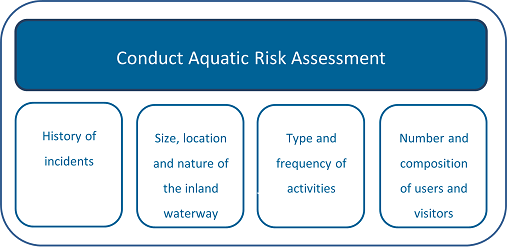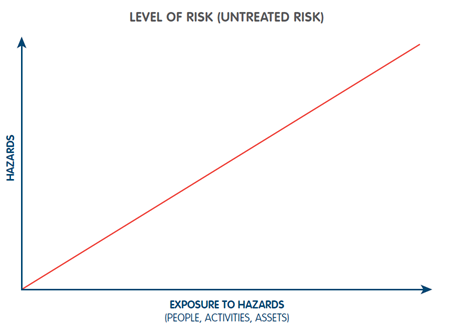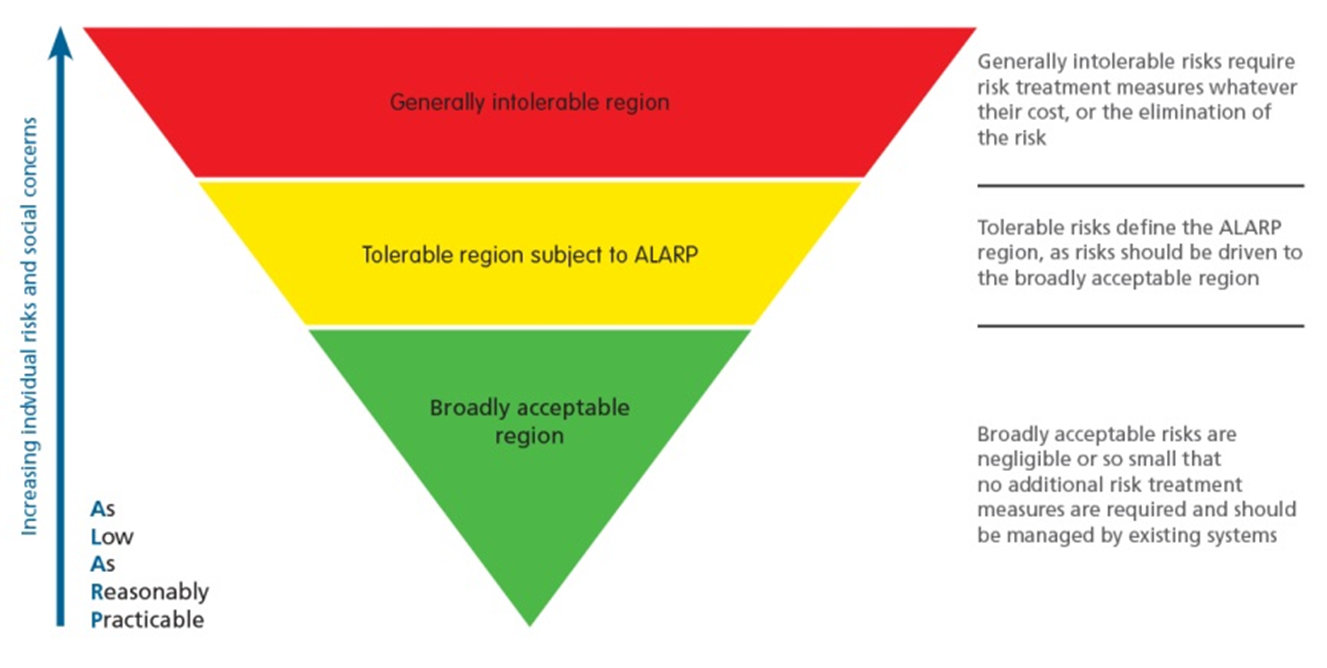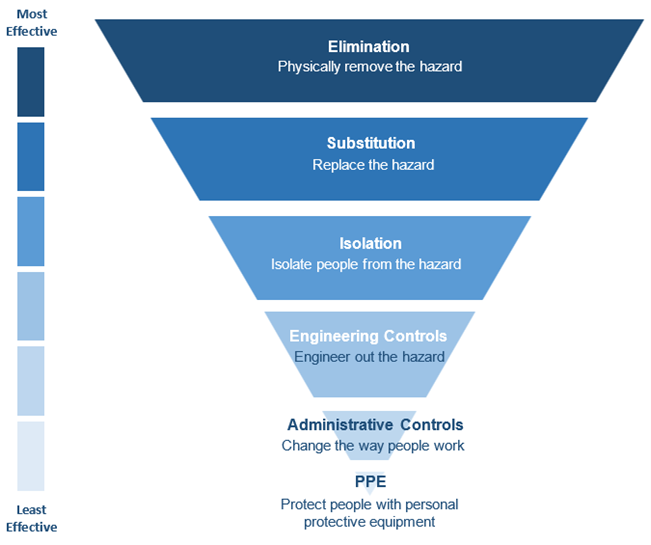IW2 - ASSESSING RISK IN INLAND WATERWAYS
| Issue Date | Effective Date | Version |
|---|---|---|
| 07/2024 | 01/07/2025 | 2.0 |
Purpose
To provide guidance on the assessment of risk in inland waterways based on established risk management practices and principles.
Scope
This guideline applies to entities and/or individuals who own, operate, or control inland waterways; or own, operate or control public access to inland waterways; or have a responsibility / duty of care for the use of the associated inland waterway, such as land or water managers or inland waterway program or activity operators (hereafter referred to as the ‘responsible person’).
There are many examples where access to waterways is via land owned or operated by a variety of stakeholders, and where the waterway is owned or operated by a third party. A shared responsibility approach between stakeholders to each do what is reasonably practicable to reduce the risk of drowning or serious aquatic injury arising from use or access to the waterway should be adopted.
This Guideline does not include guidance on water quality management in inland waterways which is covered in the Guidelines for Managing Risks in Recreational Water (National Health and Medical Research Council 2008).
Description
The responsible person should conduct a risk assessment in relation to aquatic related injury and death resulting from access to, use of or activities around the inland waterway
The risk assessment should be conducted in accordance with established risk management principles, methodologies and objectives.
The risk assessment process should be part of a broader risk management framework which includes additional processes. See IW1 for more information.
Context of risk
When conducting a risk assessment for the inland waterway, the risk assessor(s) should establish the context of risk by considering all relevant matters including:
- history of incidents at the inland waterway
- the size, location and nature of the physical environments of the inland waterway
- the type and frequency of activities at the inland waterway
- the number, characteristics and behaviour of inland waterway users at different times of the year and within different contexts (such as fishing seasons or large events)
- the extent of other aquatic risk treatments in place for the inland waterway

History of incidents
A record of incidents and other similar information to assist in controlling risks at an inland waterway should be considered. This includes:
- history of deaths, serious injuries/illness and accidents/near misses within inland waterways in Australia
- coronial and civil liability cases and recommendations
- regulations and Australian Standards
Size, location and nature of the inland waterway
In relation to the size, location and nature of the inland waterway, the responsible person should take into account the:
- quantity, dimensions, nature, capacity, depths and characteristics of all aquatic locations and recreational areas in, on, and around the inland waterway
- sources of risk present in, on and around the inland waterway
- distance from emergency responders
- availability/suitability of ways of treating risk or managing access to the inland waterway
- amount of people who have access to the inland waterway and any associated hazards
- locations within the inland waterway which will be used for aquatic activities
Sources of risk
Under the definitions listed in this guideline, there is information on sources of risk and hazards. These are summarised below.
SOURCE | POTENTIAL HAZARDS | |
|---|---|---|
Natural Environment |
|
|
Built/ Technological Environment |
|
|
Activity/Social |
|
|
Chemical and Biological |
|
|
Types and frequency of activities
Certain activities carry greater inherent risks of injury and illness and require additional risk mitigations to effectively mitigate the risk.
For each of the different activities the following information should be taken into consideration:
- time of year of the activity
- duration of activity
- type of activity
- equipment or items used for the activity
- hire of any facilities
- stakeholders who impact or are impacted by the activity (participants, spectators, children, tourism operators, clubs, etc.)
Activities may be structured or unstructured and may include:
- any underwater aquatic activities (i.e. rescue training, kayaking rolls, scuba diving)
- aquatic exercise activities
- boating/houseboating
- camping
- community events and celebrations
- diving
- floating play equipment or inflatable play equipment
- fishing
- hiking/bushwalking
- introduction and use of temporary amusement equipment
- in-water filming
- kayaking/canoeing/rafting
- lifesaving activities
- rock jumping
- school carnivals, excursions and activity days
- snorkelling/scuba diving
- sporting competition and events
- swimming
- walking/running
- water skiing/other similar activity
Proximity of waterway to high-use areas
Drowning research has shown that waterways in close proximity to densely populated areas, even when waterfronts are well-designed, can result in high drowning rates, therefore consideration should be given to waterfront proximity in areas where types of activities that people undertake in proximity to waterfronts pose higher risk, for example:
- proximity to casinos, night clubs, bars and restaurants and other areas where alcohol is consumed
- proximity to areas where children frequent, such as playgrounds
The number and composition of users and visitors
The types and total number of people in attendance at the inland waterway should be estimated for different times of the year, days of the week, weather conditions and locations within the inland waterway.
The assessor should consider the events (seasons, weather, programs and activities) both internally and externally that have an impact on the number of persons that may visit the inland waterway within a given period.
Special consideration should include those user groups who, through drowning and injury research may have more complex vulnerabilities. This includes:
- non-swimmers, weak swimmers and persons unfamiliar with the environment
- men (particularly between 18 - 54 years)
- boating and watercraft users
- fishers
- Aboriginal and Torres Strait Islander peoples
- people born overseas
- children (0-4 years)
- older people (55+ years)
- persons with a disability or medical conditions
Level of risk/risk rating
The risk assessor(s) should determine the level of risk associated with the inland waterway, including the physical locations and features, users, specific activities and zones.
Risk levels are typically described in ISO 31000:2018 as ‘Low’ ‘Medium’ or ‘High’; however, the responsible person can determine their own level of risk in line with their risk management framework.
Risk levels typically increase as the number of hazards and exposure to hazards increase. An example diagram of the level of risk is shown below.

When determining the level of risk of an inland waterway, the assessor(s) should consider:
- The likelihood of the risk concerned eventuating (also known as ‘likelihood’)
- The degree of harm that would result if the risk eventuated (also known as ‘consequence’)
- What the responsible person knows, or ought reasonably to know, about the hazard or risk and any ways of eliminating or reducing the risk
- The availability and suitability of ways to eliminate or reduce the risk
- The cost of eliminating or reducing the risk, including whether the cost is grossly disproportionate to the risk.
The assessor(s) can use likelihood and consequence tables to describe the level of potential risk in a risk matrix. Once the likelihood of the risk occurring is considered against the degree of harm that would result if the risk occurred (consequence), a risk rating can be assigned. Examples tables are below.
Likelihood Table
Level | Likelihood Level | Probability | History of Major Incidents | Frequency of Activity |
5 | Almost Certain | Will probably occur more than once | 1 or more within past year | Daily Activity or Event |
4 | Likely | High probability will occur at least once | 1 or more within past 2 years | Weekly activity or event |
3 | Possible | Reasonable that it could occur more than once | 1 or more within past 3 years | Monthly activity or event |
2 | Unlikely | May occur once | 1 or more within past 5 years | Annual activity or event |
1 | Rare | May occur in exceptional circumstances | 1 or more within past 10 years | Greater than annual |
Consequence Table
Level | Severity | Consequence |
5 | Catastrophic | Fatalities, fatal drowning |
4 | Major | Serious injury/illness, such as permanent disability; non-fatal drowning |
3 | Moderate | Medical treatment or lost time injury; |
2 | Minor | Minor injury/illness, such as first aid; |
1 | Insignificant | No injury/illness. |
Risk rating table
An example risk rating table is shown below.

Risk Appetite
After the assessor determines the level or risk (risk rating), the responsible person should identify and document the risk ratings against the existing risk appetite and determine acceptance (or otherwise).
The risk appetite will determine:
- the urgency with which risk are controlled
- the resources available and/or required to treat the risk
- the threshold for reducing the risk level to as low as is reasonably practicable (shown by the figure below)

Having considered the level of risk and the risk appetite, the responsible person should identify the measures that will be taken to control the risk associated with access to and use of the inland waterway as well as the urgency to which those measures are actioned.
- Risks should be controlled to as low as is reasonably practicable (ALARP) within the risk appetite.
- The level of urgency with which risks should be controlled should consider the likelihood and consequence of the risk occurrence.
Treatment Measures
The responsible person should implement risk treatment measures designed to minimise the event of foreseeable incidents occurring (likelihood) and the severity of their consequences to a level that is as low as reasonably practicable to the health and safety of persons in, on, or around the inland waterway.
The responsible person of an inland waterway should implement risk treatment measures that:
- Provide for the reduction of risks to a level that is as low as reasonably practicable to health and safety of persons in, on or around the inland waterway
- Provide for inspection, testing and maintenance of the safety equipment and hardware that are the physical control measures for those risks
- Provide for adequate communications between the responsible person and any relevant safety and/or emergency service
- Provide for the induction, training, exercising and development of the safety personnel that are the behavioural control measures for those risks
- Provide for audit, review and continual improvement of the standard operating procedures that are the procedural control measures for those risks
- Identify further/more extensive risk assessments that are required
- Specify the performance standards that apply, for example if the activities are conducted as part of a business or undertaking, the standard of care expected may be different from public access to public lands
Selecting risk control options
When determining which risk control measures to implement, the responsible person needs to consider more than economic (operational, financial, etc.) considerations. Stakeholder views, voluntary commitments and social license should be considered.
Where activities are conducted as part of a business or undertaking, it may be more suitable to select risk controls based on the hierarchy of controls. This may not be suitable or applicable to other types of access and use of the inland waterway. The responsible person should determine appropriateness and document arrangements so that they are understood by those involved and progress can be monitored.
The Hierarchy of Control
For businesses and undertakings, health safety guidance provides a standard methodology for controlling risks where they are ranked from the highest level of protection and reliability to the lowest, known as the hierarchy of control.

- Elimination – the most effective control measure involves eliminating the hazard and associated risk. By designing-in or designing-out certain features, hazards may be eliminated.
- Substitution – replace a hazardous process or material with one that is less hazardous to reduce the risk ( e.g. create a path or bridge).
- Isolation – separate the hazard from people, (e.g. by designing the waterfront layout so that sufficient barriers are in place to prevent unintentional entry into the waterway).
- Engineering controls – minimise the risk by changing hazardous conditions (e.g. including adequate lighting around waterfronts and/or reducing the gradient of waterfronts).
- Administrative controls – change procedures to reduce the duration, frequency, and severity of exposure to the risk (e.g. using warning signs or exclusion zones where a hazardous activity is carried out.).
- Personal protective equipment – items used or worn to minimise the risk (e.g. PFDs, wetsuits, helmets, etc.). PPE is the least effective control measure as it relies on the worker’s/user’s behaviour and therefore requires training and supervision to be effective.
Practical ways of reducing risk
The risk treatment measures / controls should be practicable and be effective in reducing risk. Control measures may include any of the control measures identified earlier in this Guideline.
TREATMENT MEASURE / Control Effectiveness Table
Risk treatment / control effectiveness refers to how well a control is at reducing or managing the risk it is meant to modify. An example control effectiveness table is below.
Level | Extent | Reliability | Availability | Effectiveness |
5 | Very High | Mostly reliable | Always | Mostly effective |
4 | High | Often reliable | Mostly | Often effective |
3 | Moderate | Somewhat reliable | Sometimes | Somewhat effective |
2 | Low | Rarely reliable | Rarely | Rarely effective |
1 | Very Low | Not reliable | Not | Not effective |
Inland Waterway Classification and Associated Risk Treatment Measures
Following a risk assessment, the inland waterway should attract appropriate risk treatment measures according to their classification.
Appendix C: Inland Waterway Classification and Associated Risk Treatment Measures Summary is a summary guide as to the appropriate risk treatment measures for various inland waterway classifications.
Classification should be used as a guide and may change daily, weekly, monthly, or seasonally, depending on conditions and usage.
Monitoring and review of the risk analysis
Monitoring and reviewing of the risk analysis is fundamental to risk management framework and should include:
- monitoring the approach used to determine the likelihood and consequence of each risk
- monitoring the effectiveness and relevance of control measures
Documenting the risk analysis
Documenting the risk analysis process provides a record of how risks were analysed in previous periods, thereby informing future risks analysis exercises. Another key element of documenting the risk analysis process is the enabling of accurate tracking of risks over time and providing evidence of due process in a legal context.
The documentation of the risk analysis should include:
- key assumptions and limitations
- sources of information used
- analysis methods used
- the existing controls and their effectiveness
- the likelihood of these consequences
- the resulting level of risk
References:
- Australia Institute for Disaster Resilience (2017). Managing the Floodplain: A Guide to Best Practice in Flood Risk Management in Australia (3rd ed.). Australian Government Attorney-General’s Department, Barton, Australia.
- International Organisation for Standardisation (2016). Environmental management systems - General guidelines on implementation (AS/NZS ISO 14004:2016). International Standards Organisation, Geneva, Switzerland.
- International Organisation for Standardisation (2015). Environmental management systems - Requirements with guidance for use (ISO 14001:2015). International Standards Organisation, Geneva, Switzerland.
- International Organisation for Standardisation (2018). Risk Management – Guidelines (AS/NZS ISO 31000:2018). International Standards Organisation, Geneva, Switzerland.
- Standards Australia (2012). Risk management – Guidelines on risk assessment techniques (HB89-2012). Standards Australia, Sydney, Australia.
- Victorian State Government (2019). School Policy and Advisory Guide: Swimming Instruction and Water Safety Education. Victorian State Government Department of Education and Training, Melbourne, Australia.
- Surf Life Saving Australia Ltd. (2016). Public Safety and Aquatic Rescue (34th ed.). Surf Life Saving Australia, Sydney, Australia.
